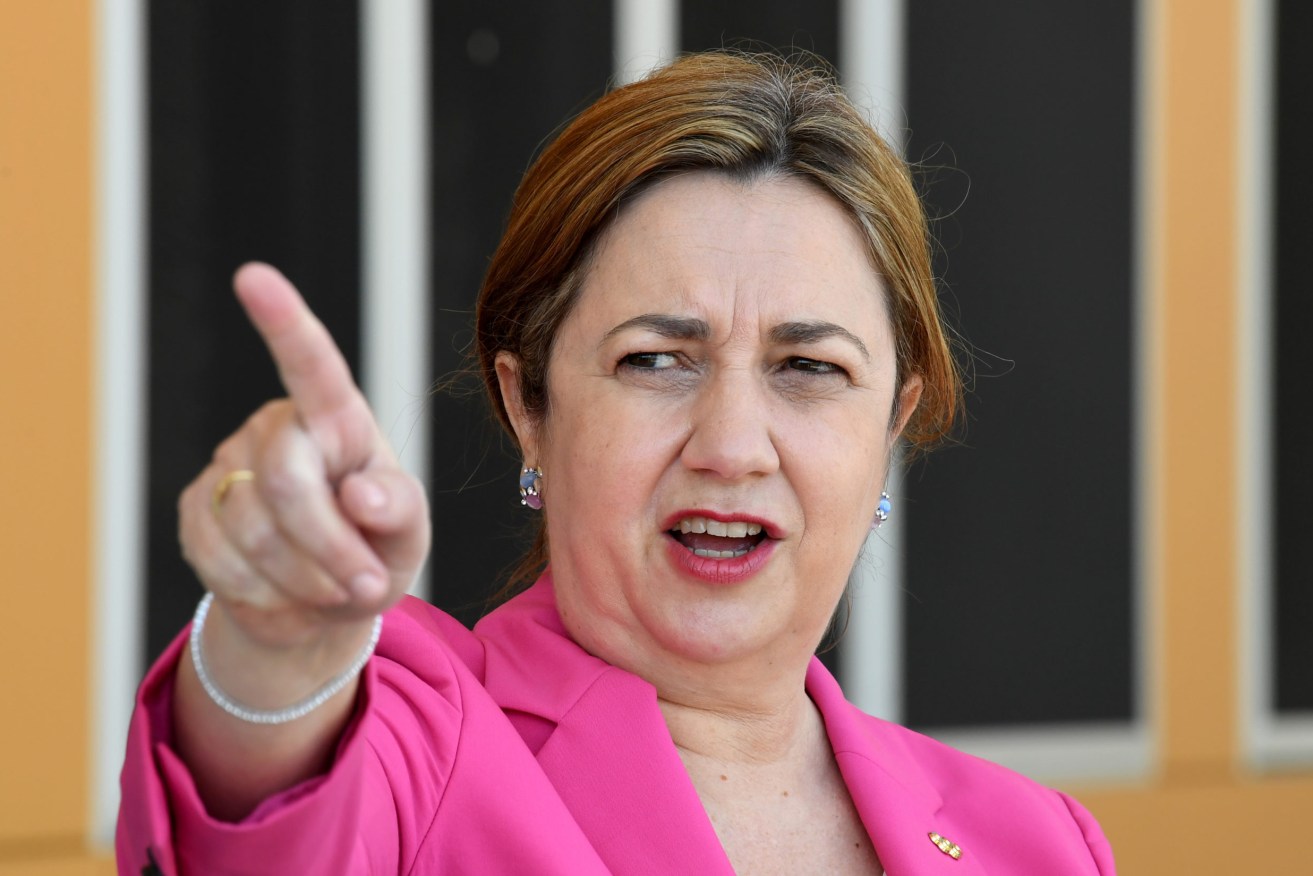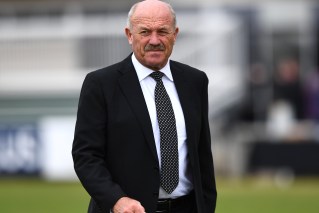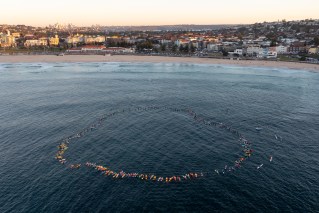Super power: Premier puts a $62 billion rocket under renewable energy
Premier Annastacia Palaszczuk all but sounded the death knell for coal-fired power in Queensland after launching a “clean-energy industrial revolution” to lead the world in renewable power.


Premier Annastacia Palaszczuk has pledged $1 billion to build more than 5600 social housing homes. (AAP Image/Darren England)
Palaszczuk’s address to business leaders in Brisbane on Wednesday included the announcement to build the world’s biggest pumped hydro scheme in the Pioneer Valley west of Mackay.
She also vowed that coal would play no part in powering Queensland homes by 2035, part of her government’s ambitious bid to increase renewable electricity in the energy mix to 70 per cent by 2032 and 80 per cent by 2035.
The core of the plan is a network of wind and solar farms, green hydrogen manufacturing, large-scale battery generators and pumped hydro, mostly spread throughout regional Queensland that will feed energy into a super grid.
Combined, the network is tipped to unlock 22GW of new renewable capacity, boosting levels of green energy to eight times the current level.
“By building a transmission super grid we can export our sunshine and wind energy to power more jobs and households,” Palaszczuk said.
The centrepiece of the plan will be the massive Pioneer Burdekin hydro scheme with capacity to power half of Queensland, supported by another hydro development at Borumba Dam near Imbil in the Wide Bay-Burnett.
Palaszczuk said the north Queensland scheme would be the biggest energy infrastructure project in Australia since the Snowy Hydro scheme in NSW, generating more than two-and-a-half times the electricity.
The plan comes with a $62 billion price tag that public and private investment would foot, Palaszczuk said.
However, Energy Minister Mick de Brenni said Queensland’s power generators would remain in public ownership.
“This has proved vital to investment in cleaner, cheaper energy,” he said.
“We will maintain majority public ownership of generation and 100 per cent public ownership of transmission and distribution.”
The Premier also estimated 100,000 jobs would be created to 2040 to deliver the yet-to-be-built network that remains subject to environmental approvals.
The jobs promise also extends to workers currently employed at publicly owned coal fired-power stations, which would be converted to clean energy hubs.
“The guarantee will support workers with access to re-skilling, transfer to new opportunities and advice on future career pathways,” Palaszczuk said.
Reaction to the plan has been swift, with University of Queensland economist Professor John Quiggin telling InQueensland he appreciated the detail beyond a headline target.
“It was a lot more impressive than what I was expecting,” he said.
“We certainly haven’t seen a lot of pumped hydro as an option before, but from what I’ve studied the economics of pumped hydro look pretty good.”
Jason Sharam, the boss of trade services provider Linked Group Services, said finding the large numbers of skilled people to carry out construction and maintenance would be challenging, but he welcomed the goal.
“Now we have a goal it gives us some certainty about the direction in which we’re headed. That’s certainly been missing,” he said.
“Now we just have to work out how, but I’m confident that with a national approach to training and building our skills base we’ll get the people we need to do the job.”
Opposition environment spokesman Sam O’Conner said there were questions about the government’s ability to deliver on its promises.
“Every environment target they have set themselves they have failed to meet. Even in this space they are not even half way towards their 2030 renewable target after seven years in government,” O’Connor said.
“I think they even have doubts they can deliver this, because otherwise they would have increased their 2030 emissions reduction target. We need to see more detail and where the funding will come from.”
Palaszczuk said Queensland needed an ambitious plan to combat carbon emissions and slow the rate of climate change damage on the environment, the economy and communities.
“Since 2011, Queensland has experienced 98 natural disasters,” she said.
“Climate change is real. Its impacts are real. Its effect on the future of Queensland now and into the future is real.”












